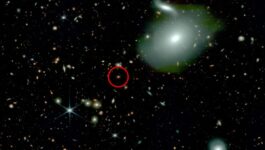
James-Webb spots strange supermassive and ultra-luminous black holes with mysterious origins

James Webb (JWST) has struck again… where it hurts! Using Hubble's successor space telescope, astrophysicists have identified five quasars more than 13 billion years old, a short (cosmic) time after the Big Bang. Nothing totally mind-blowing so far regarding these extremely luminous supermassive black holes, which formed between 600 and 700 million years after the “great inflation”. But some of these quasars call into question a model that the scientific community previously considered to be the most in line with astronomical calculations and observations.
Quasars that leave you perplexed
Indeed, if some of these quasars are, as expected, well located in dense regions of the primitive universe, some seem lonely. “They were in the middle of nowhere, so to speak.explains Anna-Christina Eilers, researcher at MIT. While one of the quasars was surrounded by around fifty galaxies, only two were located near another quasar. This is really surprising for objects of the same size, volume, brightness and age.”
The fact is strange, because it is estimated that these supermassive black holes shining like billions of stars must consume gas and dust to exist and produce light in their accretion disk. How were they able to exist and grow so soon after the Big Bang without any material around them to consume?
Cosmic dust and cosmological questions
The theory put forward at the moment by astrophysicists is the following: these quasars might not be so alone in reality. In their surroundings there could be galaxies that are impossible to detect by our devices due to dust. Otherwise, many accepted models of cosmology could be undermined by this discovery.
“Our results show that an important piece of the puzzle of supermassive black hole formation is still missingadds Anna-Christina Eilers. If there isn't enough material around some quasars for them to grow continuously, that means there must be another way for them to grow. We don’t know which one.”





